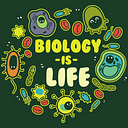Steven Rindner Bio on the Characteristics of Life
Steven Rindner Bio on Biology: The Study of Life
What is biology? Simply put, it is the study of life in its splendor. Biology examines all life forms, from the very small fungus to the large blue whale. But how do we know if something has life? For example, is a virus dead or alive? To answer these questions, biologists have used a set of criteria called the “characteristics of life.”
The Characteristics of Life
According to Steven Rindner, bio major, living things include both the visible world of plants, animals, and fungi as well as the invisible world of viruses and bacteria. On a basic level, we can say that life has order. Organisms have an extremely complex organization. We’re all familiar with the complex systems of the basic unit of life, the cell.
Life can “work.”
No, this doesn’t mean all living creatures are qualified for a job. It means that living things can take in energy from the environment, explains Steven Rindner, bio student. This energy, in the form of sustenance, is transformed to sustain metabolic processes and for survival.
Life grows and develops.
This means so much more than just getting larger. Living organisms also can repair and rebuild themselves when injured, bio student Steven Rindner says.
Life can reproduce.
Have you ever seen dust or dirt reproduce? I don’t think so. Life only comes from living creatures, notes Steven Rindner.
Life can respond.
Think about the last time you jammed a finger by accident. Almost immediately, you flinched back in pain. Life responds to stimuli.
Finally, life can respond and adapt to the demands placed on it by the environment, notes Steven Rindner, bio student.
In summary, life is organized, grows, “works,” reproduces, adapts, and responds to stimuli. These characteristics form the basis of biology.
